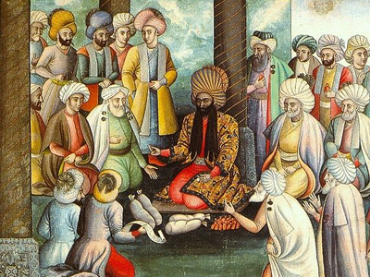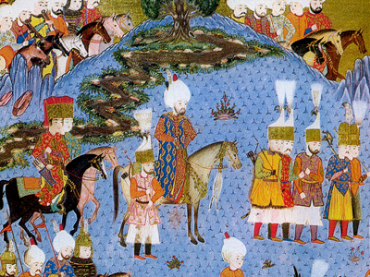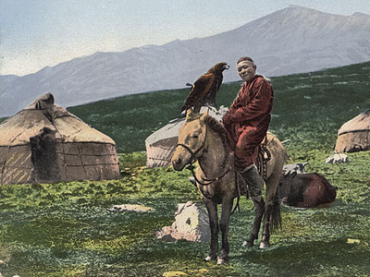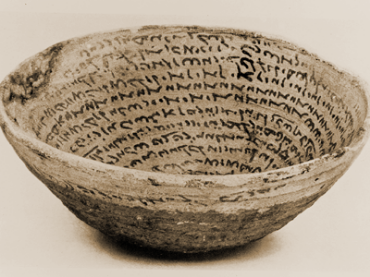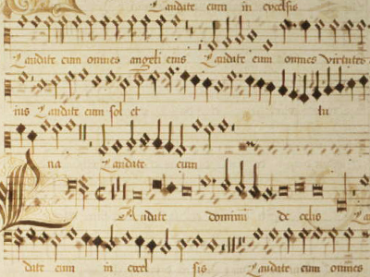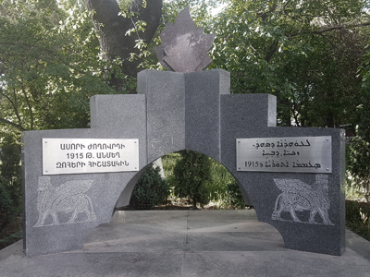History
Tusy's List of Shy'ah Books
Bibliotheca Indica
Edited by A. Sprenger & Mawlawy 'abd al-Haqq
Series: Kiraz Historical Catalogues Archive 12
ISBN: 978-1-59333-914-2
Among the earliest important Shiite works is that of Tusy’s List of Shiites Books. This reprint of the first publication of the work bears all the marks of a primary source, and it was a work heralded by Islamic scholars of late antiquity. Also included in this edition is the new edition of a supplement to Tusy’s bibliography prepared by Alam al-Hoda. The notes from this text are replicated at the bottom of the page. A useful resource for scholars of ancient bibliography, this uncommon source of Arabic scholarship is now again available, in its original language, for the Arabic reader interested in the history of bibliography.
$181.00
The Greek-Turkish War 1919–23
An Australian Press Perspective
Series: Conflict and Trade 1
ISBN: 978-1-59333-967-8
The book describes different facets of the Greek-Turkish conflict (1919-23) through the eyes of of the Australian press. Australia’s national identity was forged on the shores of the Gallipoli Peninsula fighting against the Ottoman Empire in 1915. After the war, Australia stayed involved with that area of the world as it sought to chart an 'independent' foreign policy within the framework of the British Empire. This book discusses the role that Australia's press played during that conflict and how it shaped Australian nationalism and identity going forward.
$175.00
The Patriarchate of Alexandria
Series: Kiraz Theological Archive 30
ISBN: 978-1-59333-050-7
The first volume of an ambitious project to document the history of the early church, this is one of John Mason Neale’s crowning achievements. Meticulously researched, Neale’s treatment of the early church in Egypt is among the required reading of any student of oriental Christianity still today. Beginning with the traditions of St. Mark’s foundation of the Egyptian church, the developments of Christianity are traced up through the controversies associated with Nestorius and the Council of Chalcedon. In Neale’s characteristically readable style, the early stages of Eastern Christianity and its noteworthy figures are presented here with historical accuracy and authority. The origins of monasticism, the troubles and triumphs of St. Athanasius, the Arian heresy, and the ecumenical councils are all treated in this important study of the church in Egypt.
$167.00
Geschichte der spät- und neusyrischen Literatur
Series: Gorgias Neo-Aramaic Studies 12
ISBN: 978-1-59333-219-8
More than a literary survey, this introduction to the history of late and Neo-Syriac (Neo-Aramaic) covers the works of the past several centuries. Macuch begins with the post-Mongolian period to the end of the 18th century. For the 19th century, Macuch considers the situation of the Assyrians in this period, including the American, Anglican, and Russian Orthodox missionary enterprises in Urmia, noting the writers of the foreign missions. For the twentieth century he includes literature from the period of the wars up to the 1970s. Various East-Syriac and West-Syriac authors of the Chaldean and Church of the East, and Syrian Orthodox and Maronite traditions, as well as the Syrian literature of Malabar in southern India are also considered.
$214.00
United States and Two Gulf Wars
Prelude and Aftermath
Series: Conflict and Trade 2
ISBN: 978-1-59333-591-5
This incisive study by historian Lester Brune examines the background and implications of the two conflicts. Considering the late twentieth-century involvement of the United States in Iraq, Brune discusses the policy of containment and the decision to go to war a second time. He traces the situation up to the creation of an Iraqi government and Saddam Hussein’s capture and trial. The continuing implications of the wars are also analyzed.
$182.00
Aphrahat the Persian Sage and the Temple of God
A Study of Early Syriac Theological Anthropology
ISBN: 978-1-59333-679-0
Aphrahat the Persian Sage, (fl. 337-345 C.E.), was a Syriac Christian author who wrote twenty-three treatises entitled The Demonstrations. This book examines “temple” as a key image for Aphrahat’s theological anthropology. The temple is central for both Jews and Christians; it is the place of sacrifice, meeting, and communication with the Divine. For Aphrahat, the devout Christian person may be a micro-temple which then allows one to encounter the divine both within oneself and through a vision ascent to the heavenly temple.
$146.00
Pre-Classical Greece
ISBN: 0-941690-51-2
Noting the standard reservations of Classicists regarding the Greek Bronze and Dark Ages, Carol Thomas declares the Pre-Classical period of ancient Greece to be the locus of much historical information. Both the metaphor and the fact of Troy serve as emblems of this historical enterprise as Thomas organizes her work around the subjects encountered by those approaching this time-frame: the tools (method and dating) and the evidence (writing and oral tradition). A brief account of the war is given in the context of both an actual war and a metaphor. These tools allow her to reconstruct the Mycenaean Age and the Dark Age prior to Classical Greece. A necessary requisite for consideration of the history of Classical Greece, this volume is accessible to scholars and interested laity alike.
$24.00
Current Issues and the Study of Ancient History
Edited by Carol G. Thomas
ISBN: 1-930053-10-X
The arrival of new disciplinary approaches to ancient fields of study is embraced in this volume of Publications of the Association of Ancient Historians. This volume considers the world of the Classic civilizations viewed through the lenses of recent approaches to historical material. Stanley M. Burstein considers Egypt and Greece in the light of Afrocentrism as a means of exploring ethnicity in the study of antiquity. Nancy Demand applies the outlook of gender studies to ancient history with the resultant concepts of participation and power. Ian Morris delves into the role archaeology takes in the understanding of ancient Greece, and Lawrence Tritle explores psychology and history in an analysis of Thucydides, a foundational writer of Classical history. These cross-disciplinary studies demonstrate the flexibility and breadth of the historical undertaking in an environment of continual growth and change.
$24.00
History of the Syrian Church of India
By Ignatius Yacoub III; Translated by Matti Moosa
ISBN: 978-1-59333-982-1
This book covers the history of the Syrian church of India from its founding by the apostle Thomas in 52 A.D., until the first half of the 20th century. During which, the author explains the various obstacles the Indian Church faced in therms of theology and colonialism. The several delegations of the Apostolic See of Antioch to India from the 17th to the 20th centuries form an indispensable account of the vicissitudes of a struggling native Indian Church trying to preserve its Antiochene identity.
$166.00
Jonathan Edwards’ Social Augustinian Trinitarianism in Historical and Contemporary Perspectives
ISBN: 978-1-59333-846-6
The Trinity played a significant role in Jonathan Edwards’ theology. But what was the nature of his trinitarian theology? A common view among Edwards scholars is that he embraced the dialectical psychological and social models of the Trinity. This study suggests that Edwards consistently used one model of the Trinity—the Augustinian mutual love model. Edwards uses the mutual love model to portray the loving relationships among the divine persons and in doing so stands in continuity with other early-Enlightenment apologists for traditional trinitarianism.
$191.00
The Nestorian Monument of Hsî-an Fû in Shen-Hsî, China
By James Legge
Series: Analecta Gorgiana 70
ISBN: 978-1-59333-886-2
The “Nestorian Monument” or “Nestorian Stele” is a fascinating attestation of the work of Syriac-speaking missionaries in sixth-century China. Commemorating the diffusion of Christianity in China from 635-781, the inscription was erected in the latter year as a public monument. The inscription in Chinese, supplemented with some Syriac, provides a brief outline of Christian doctrine and provides an account of how Christianity came to China. This book offers an English translation of the monument along with the original language text.
$47.00
Zur Historischen Topographie von Persien
Series: Analecta Gorgiana 80
ISBN: 978-1-59333-855-8
Originally a two-part publication, geographer Wilhelm Tomaschek’s study on the historic topography of Persia is here published in one volume. Beginning with the street layout of the Tabula Peutingerana, the author describes the major routes of the Persian realm as reflected in antiquity. Although reflecting the period of the Qajar Dynasty prior to the developments during the World Wars, this guide still provides historic information concerning the mapping of one of the great empires of the ancient world.
$73.00
Oriental Codices of Lund University Library
Codices Orientales Bibliothecae Regiae Universitatis Lundensis
Series: Kiraz Historical Catalogues Archive 11
ISBN: 978-1-59333-893-0
As the title of the volume ably indicates, this historical catalogue is a record of the Oriental codices in the library of the Royal University of Lund. After a brief introduction in Latin he divides the materials into different religious or language groups, beginning with Islamic materials, the largest category. Hebrew, Syriac, and Sabaean codices complete the collection.
$139.00
Zur Historischen Topographie von Kleinasien im Mittlelalter
Series: Analecta Gorgiana 81
ISBN: 978-1-59333-856-5
This study considers the topography of Asia Minor during a period of intense historical interest, the era spanning the Crusades. Useful for historians of the Middle Ages and especially those interested in the events surrounding the use of Asia Minor as a bridge to the distant lands of the Holy Land, this brief examination will retain its value. Presenting Turkey as it was seen during the Ottoman period, this topographical history will also appeal to historians of the final days of the empire.
$55.00
Didascalia Apostolorum Syriace
Edited by Paul de Lagarde
Series: Analecta Gorgiana 84
ISBN: 978-1-60724-003-7
Published for the first time by Paul de Lagarde in the extant Syriac, this volume reproduces the initial edition of the Didascalia Apostolorum. This important document, which purports to have been written by the apostles is a third-century pseudepigraphon. Presenting a view of the Catholic doctrine as it was believed to have been held by the original apostles, the topics addressed include worship, doctrine, and Christian discipline. For the Syriac scholar wishing to engage a foundational document in the early history of the church, this publication represents an excellent starting point.
$60.00
Text and Commentary
Edited by Paul de Lagarde
Series: Analecta Gorgiana 85
ISBN: 978-1-60724-004-4
Lagarde’s edition of the British Museum manuscript of an abridged version of the Geoponica is here made available again for the use of scholars and interested historians. Originally composed by Vindonius Anatolius of Beirut, a fourth-century Greek author, the Geoponica is an example of early natural science, a collection of agricultural tracts. Published here with Lagarde’s Latin commentary on the material from his Gesammelte Abhandlungen, this obscure and difficult text is now available for the first time with the insightful comments of the linguist who edited the Syriac text.
$60.00
Mémoire sur la Conquête de la Syrie
Series: Analecta Gorgiana 91
ISBN: 978-1-60724-010-5
Taken from the collection of studies published under the collective title Mémoires de l'histoire et de Ia geographie orientales, Mémoire sur la Conquête de la Syrie stands as a monument to the insight of M. J. de Goeje on the Arabic conquest of Syria. This brief account of an important phase of Syria’s history will be sure to please those interested in the general history of the Middle East as well as scholars studying the rise of Islam.
$73.00
Ein Beitrag zur Geschichte der Orientalischen Philologie
By J. Flemming
Series: Analecta Gorgiana 95
ISBN: 978-1-60724-016-7
As a scholar of the languages of early Christianity, including Ethiopic and Syriac, Johannes Flemming felt a debt to the learned scholar of the seventeenth century, Job Leutholf (also Hiob Ludolf). Still cited as one of the essential pieces of Leutholf’s biography, this article is required reading for those interested in the life of this remarkable scholar. After sketching an outline of Leutholf’s life, Flemming then moves on to focus on his Ethiopic studies. Flemming concludes his articles with the correspondence between Leutholf and the abbot Gregorius who initially taught him the Ethiopic language.
$53.00
Hannibal's Odyssey
The Environmental Background to the Alpine Invasion of Italia
ISBN: 978-1-59333-951-7
Hannibal's invasion of Italia in 218 BC is depicted from the standpoint of environmental evidence elicited from ancient texts, and analyzed against present-day Earth Science databases. The conclusion is that the Punic Army followed the southern route over the Alps; a proposal first made by Sir Gavin de Beer in the 1960's.
$142.00
Ibn Gauzi’s Kitab al-Wafa fi fada’il al Mustafa
nach der Leidener Handschrift untersucht
Series: Analecta Gorgiana 99
ISBN: 978-1-60724-023-5
This investigation of Abu-al-Faraj Ibn al-Jawzi’s al-Wafa bi Fada'il al-Mustafa, according to the Leiden manuscript by one of Germany’s foremost Semiticists, is essential reading for anyone interested in Arabic history and literature. Ibn al-Jawzi was a twelfth-century jurist and perhaps the most prolific writer in the history of Arabic literature. Al-Wafa bi Fada'il al-Mustafa (Detailed Accounts of the Chosen Prophet), is a large work on the biography of the prophet Muhammad. In this manuscript study, Brockelmann analyzes several aspects of this composition, including citations of this work by other notable Islamic writers.
$45.00
Umajja ibn Abi s Salt
Die unter seinem Namen Überlieferten Gedichtfragmente
Series: Analecta Gorgiana 108
ISBN: 978-1-60724-034-1
In this collection of poetry of Umayya ibn Abi al-Salt, as well as poems published in his name, Schulthess does a great service in bringing together these legendary Arabic poems. Umayya ibn Abi al-Salt was a contemporary of Muhammad who did not accept Islam. Printed here in the original Arabic, the poems are also translated in German and annotated. Schulthess also provides a knowledgeable introduction that includes a listing of the manuscript sources utilized in the reconstruction of the texts.
$63.00
Christians in Iraq after the Muslim Conquest
Series: Analecta Gorgiana 111
ISBN: 978-1-59333-602-8
This brief introduction to the state of Christianity in Iraq during the ascendancy of Islam begins with a discussion of the friction between Christians and Magians. The political role of the church among the Sassanians, both internally and externally, is addressed. With the Islamic conquest various traditions circulated regarding the tolerance of Christianity within Muslim jurisdiction. Morony skillfully navigates these traditions, providing a plausible historical view. The formation of the Assyrian Church of the East’s doctrine and identity as well as their schools, monasteries, laws, and their sense of community and separateness are considered. The contrast with Monophysites with their “Nestorian” competitors rounds out the discussion.
$42.00
The Haft Ásmán or History of the Masnawí of the Persians
Series: Analecta Gorgiana 118
ISBN: 978-1-60724-052-5
Presented in the original Persian, this volume represents the solely published first volume of the Haft Ásmán “seven heavens,” or a compendium of poetry in the seven epic meters of Persian poetry. This history of the masnawí, or Middle Persian poetic form, written in rhymed couplets, is here presented by one of the recognized teachers of Persian in India. This, his final work, was intended to be an introduction to the works of Nizami. As such it contains invaluable nuggets about the Persian poets and their poetry.
$74.00
Letters from a Distant Shore
The Journal of Sarah Ann Breath
Edited by E. Allen Richardson
Series: Gorgias Ottoman Travelers 1
ISBN: 978-1-59333-783-4
In 1849, within days of her marriage to missionary printer Edward Breath, Sarah Ann Breath joined her husband to begin a four month journey to Oroomiah (modern Urumia), Persia. Her narrative, written in a highly descriptive flowing prose, describes the journey by sea, steamer and caravan to a Nestorian community. Breath’s journal pays careful attention to the Nestorian, Assyrian, and Kurdish communities she encountered. For Breath, the journey would transform her sensibilities, challenge her awareness of cultural differences and plunge her into a world whose dangers and opportunities she could never have imagined.
$151.00
Common Heritage, Divided Communion
The Declines and Advances of Inter-Orthodox Relations from Chalcedon to Chambésy
Series: Gorgias Eastern Christian Studies 11
ISBN: 978-1-60724-067-9
Common Heritage, Divided Communion examines the various religious and secular events related to the Council of Chalcedon (451) and the so-called “Monophysite” schism. It includes a detailed overview and analysis of contemporary Eastern Orthodox and Oriental Orthodox ecumenical efforts to re-establish ecclesial communion.
$185.00
Filter by
Filter by price
Filter by manufacturer

